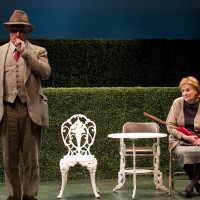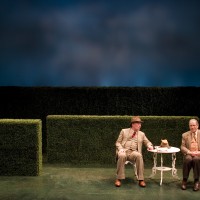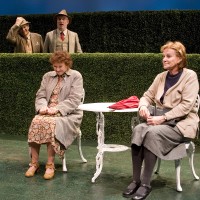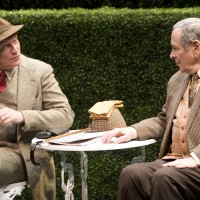Dramaturgy
David Storey’s play “Home” was hailed as “quietly brilliant”, “transporting”, and “extraordinarily pungent” when it was first produced at the Morosco Theatre in 1970, with Sir John Gielgud and Sir Ralph Richardson in the starring roles. Storey, born in 1933 in Wakefield, West Yorkshire, did not have early aspirations towards writing; in fact, he wanted to be a painter. His father was a coal miner who spent almost all of his working life at the coalface, laboring in order that his three sons might have opportunities for higher education. When Storey informed his father of his more artistic sensibilities, his response was that if he wished to pursue painting he must pay his own way. Storey was not discouraged; at age 18, he enrolled in the Slade School of Fine Art in London, and financed this education by signing a 14-year contract to play professional rugby league for Leeds. He traveled back and forth by train, devoting his commute to writing novels. He says, though, that this special permission he received to attend school while being an athlete “had a very poor effect on the other players, who were all young coal miners – this artist swanning in for matches. At the Slade meanwhile I was seen as a bit of an oaf. I only really felt at home on the train, where the two different parts of my life came together.”
His first published novel was, in fact, the seventh one he wrote in his time on the train; it was published under the title This Sporting Life, in 1960 (when Storey was 26), by Longmans-Green after more than a dozen rejections by other publishers. Novelist Carey Phillips, who grew up in Leeds and also wrote extensively on sports, praised the novel, saying of it, “it’s about working-class northern sport, the concomitant class tension…and it spoke to me with force. Rugby league is very suggestive of northern identity and spirit, something I felt as both a liberating force and a claustrophobic problem. Storey might have felt similarly.” The novel was made into a film, directed by Lindsay Anderson, who would go on to direct many of Storey’s later plays (including “Home”).
Storey’s inspiration to write a play came more as a side-thought than a serious consideration. His novels were being rejected consistently for publication, and he was growing tired; he thought to himself that perhaps writing a play would be a good change, as there is only need to write dialogue and not description. His first play, “The Restoration of Arnold Middleton”, was produced a half-dozen years later, and Storey says, “the exhilaration of seeing it come alive on stage prompted me to write another five plays in no time at all, feeling that I’d found a whole new venture.” The Royal Court was an avid supporter of his works, and Lindsay Anderson eventually directed nine Storey plays there and at the National Theatre.
“Home” received rave reviews when it was performed, and Storey himself respectfully compared to both Pinter in that “he, too, has a gift for the dialogue of people speaking colloquially and trying to bridge a communication gap, and making it deeply dramatic and revealing.” Comparisons to Beckett’s “Waiting for Godot” were also plentiful in critics’ responses to “Home”. Storey’s writing was described by The New York Times as “compressed, and somehow terse even at its most apparently garrulous. It is full of stops, hesitation and leaps, as irrational as tape-recorded speech and as formal a string quartet. Its skill is in capturing spontaneity and freezing it into art.” Of the performances by theatrical legends Gielgud and Richardson, there was also nothing but praise; the two “act together with total unawareness of acting, reflecting the other, pausing, listening (both are magnificent listeners), and always suggesting words they never say, and expressing feelings they can never quite express.”
Storey’s work at its best was always marked by an extraordinarily simple yet profound sense of humanity. The New York Times understood Storey’s essence perfectly when, in their review of “Home”, the critic noted that “always, there is Mr. Storey’s compassion, straight-faced, unsentimental, and yet warm.”





